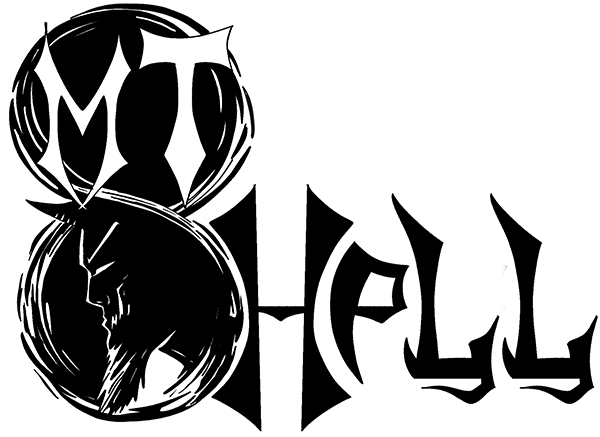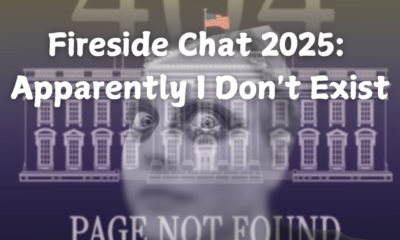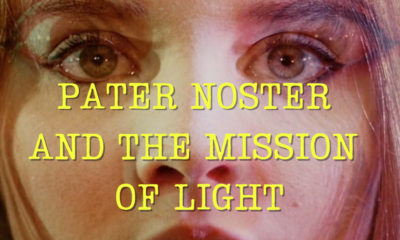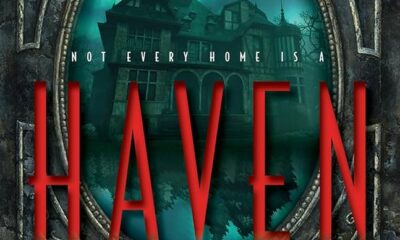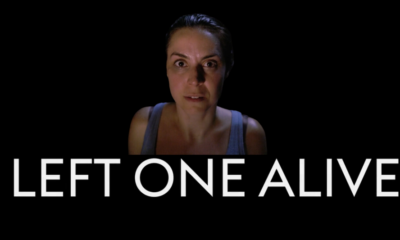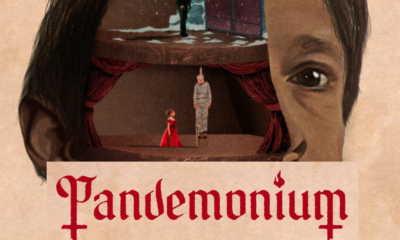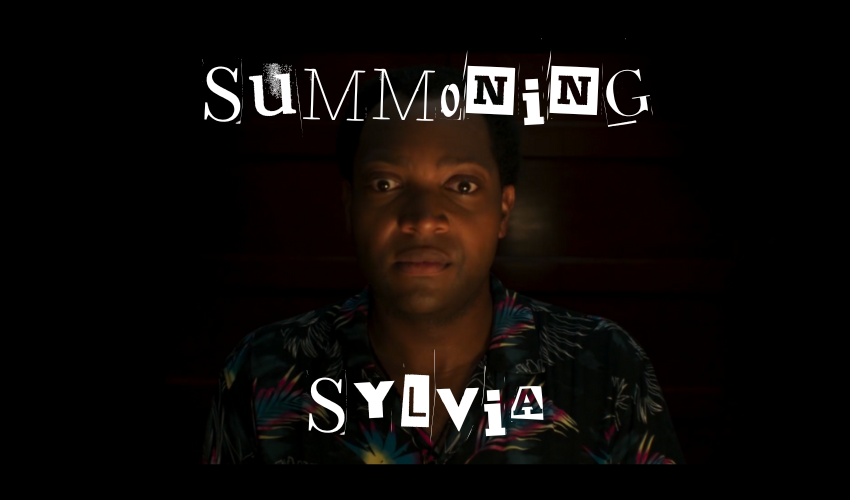
2023’s ‘Summoning Sylvia’ is a Faboolous New Film
I wasn’t sure what I was getting into when I was asked if I wanted to cover the new “LGBTQ horror” film, SUMMONING SYLVIA from director/writer duo, Wesley Taylor and Alex Wyse.
New LGBTQ horror can feel either very outrageous and full-on camp like Death Drop Gorgeous, Ticked Off Tr*****s With Knives, or You’re Killing Me.
Or they can be very cerebral and dramatic like Raw, Lyle, and Bit.
So, which route would SUMMONING SYLVIA take?
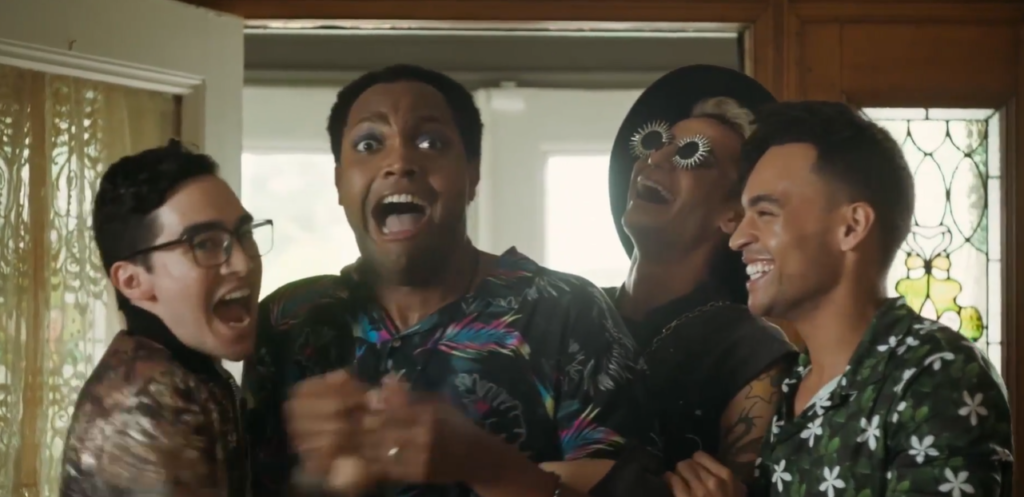
Summoning Sylvia’s Plot:
It’s the bachelor weekend for Larry (Travis Coles) and his three best friends (Frankie Grande, Troy Iwata, and Noah J. Ricketts) have booked an entire weekend to spend together in a historic house. They’re set on getting glam, party games, drinking appletinis, eating fancy snacks, and the pièce de résistance — a séance to summon Sylvia (Veanne Cox), the murdering mother and resident ghost.
However, what they didn’t plan on was Larry’s new brother-in-law (Nicholas Logan) to crash the party and open up new doors to dark pasts…
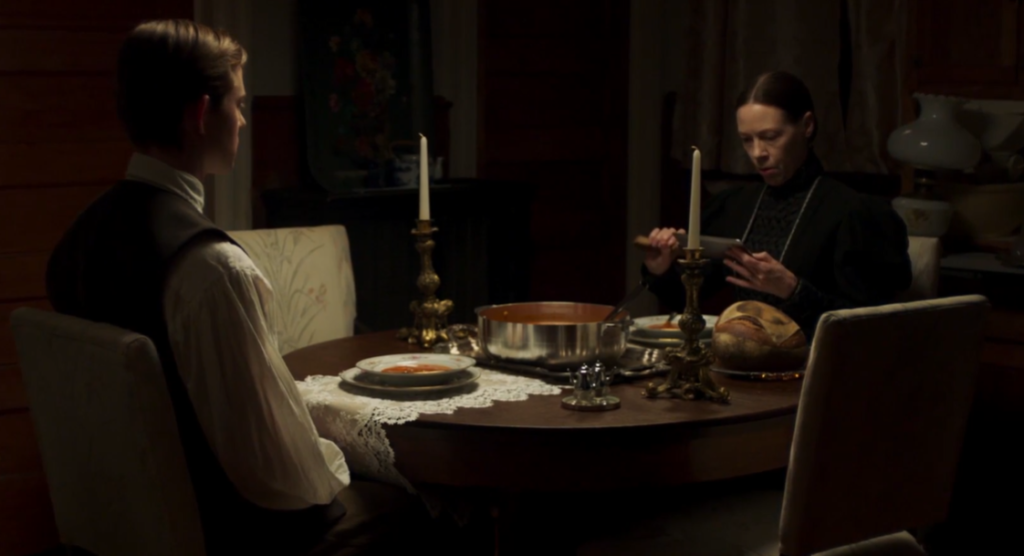
Thoughts:
I was expecting to enjoy this movie enough. Nothing too much, nothing too little.
With a lot of LGBTQ horror comedies, they typically have the same jokes and punchlines. And as much as I love big dick jokes and bottoming jokes as much as anyone, but it gets to be…a lot. It gets stale. It gets boring.
And worse, inauthentic to the characters and plot.
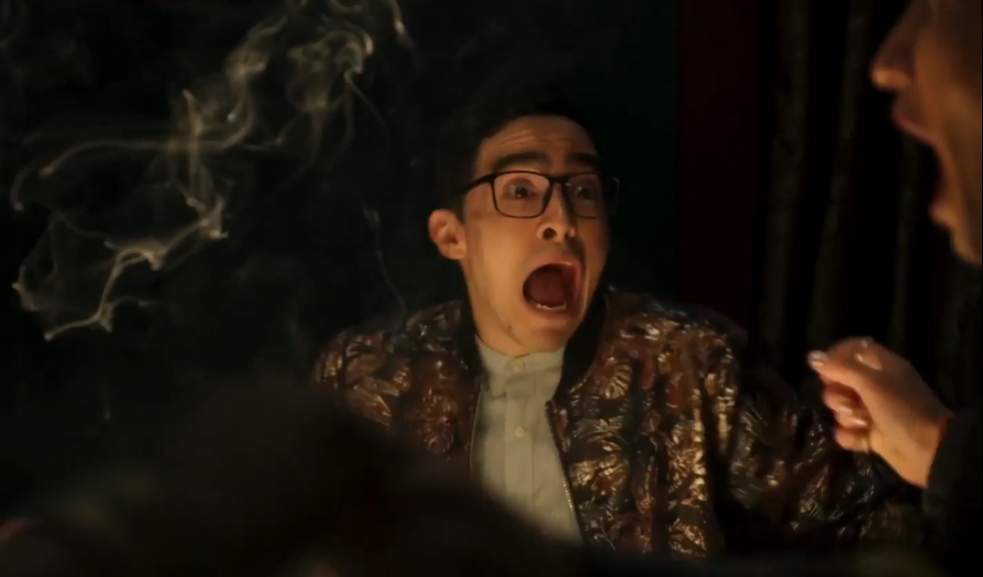
However, I was pleasantly surprised. Yes, this caters to a very specific type of gay subculture, but it was authentic in its celebration. When Larry wipes off his eye makeup, knowing that his very straight and close-minded new brother-in-law is coming, it’s heartbreaking. It’s watching him wash a piece of his happiness away in a very quiet and sad moment. We understand his character completely in this small and subtle gesture.
The cinematographer (Matthew Roveto) did a fantastic job at focusing in on Larry throughout the film, reminding us that Larry is the focal point, regardless of the story. This was HIS story, even with other shenanigans happening.
And I’m really shocked to find out that Travis Coles hasn’t done that much in front of the camera yet, spending most of his experience as a crew member. His range and rawness are there throughout the film. As Larry, he was playful, nurturing, and self-conscious. For a silly-billy movie about ghosts and gays, he effortless portrayed a lot of depth.
And in fact, the whole cast has real magnetism and cohesiveness that I often find lacking in many horror movies. It’s the common trope of “friends find a haunted house”, with an emphasis on “haunted house” but very little thought on the “friends” part.
The warmth that the characters had, even the catty diva Nico (Frankie Grande), was convincing and magnetic. The cast gelled well together and were believable as friends who sass each other and maybe (like many queer circles) have little crushes. The relationships in Summoning Sylvia were genuine and charming.
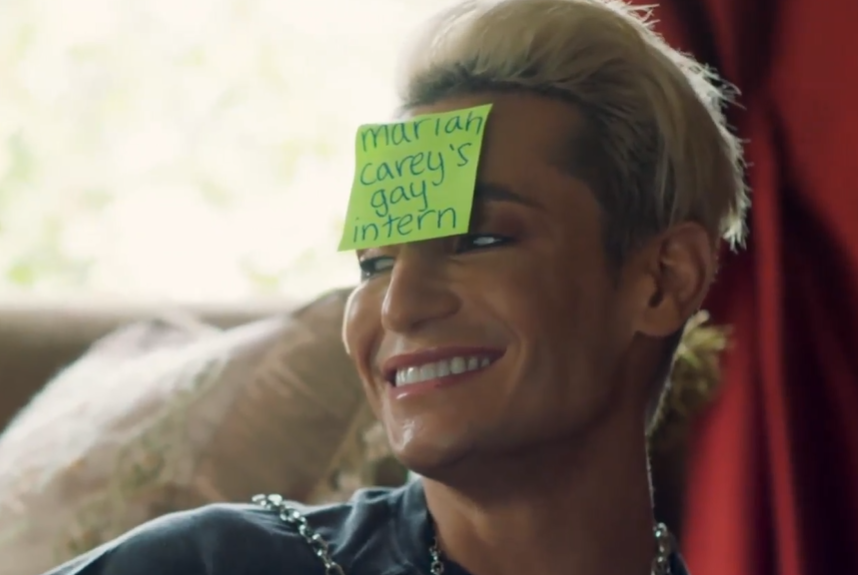
Also, the editing (Sara Corrigan) with the ghosts in the past and the characters in the present was incredible and stylized. The editing was so effective and precise, it delighted me every time I saw it.
The costuming and sets were so much fun and showed the juxtaposition between the ghosts and the guys. From dark and drab to light and…well…gay. Each character had his own design and brand, which was easy to pick up. All of them were dressed beautifully and Sylvia was foreboding and gothic. Pure perfection.
The only thing that I had a bit of a hard time with was…
Brainroll Juice : The Ending of Summoning Sylvia
The ending was a bit messy. Everything was kind of happening all at once, like a sloppy Joe sandwich coming out at all ends.
And we haven’t really talked about Harrison.
Oh, Harrison.
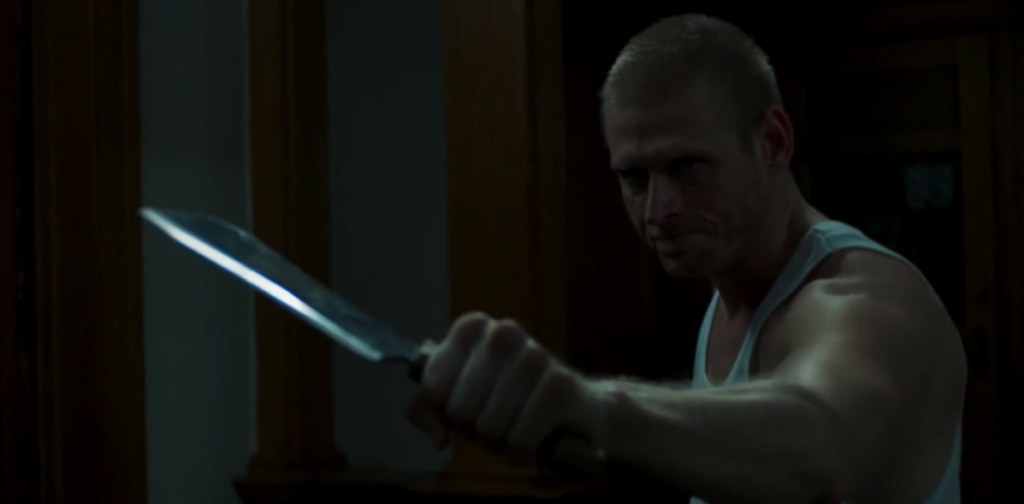
So, I know. I get it. People are awful. They get weirded out by things they don’t understand even to this day. And there’s a suspicion that some of what Harrison says and does in this movie are because he’s under the possession of Sylvia.
And regardless of that or not, I was really hoping that there would be another twist. Because Nicholas Logan’s acting isn’t bad. It’s good as a stereotypical cis-het white male as the villain. And the ending is the same as many other endings with the same, er, beats (I’m trying hard not to give this away). And while I applaud Larry for standing up to him, I wish there had just been a different twist.
It’s a safe ending. It’s a trope ending.
And that’s not necessarily bad, but I just wanted it to veer into new and fresh territory. I wanted more from the ending.
Now, this was a short movie, and perhaps there was a longer ending, who knows. I would have loved a little more time to clean up the sloppy Joe mess and tie things up more gracefully, but obviously that wasn’t in the cards.
At the end of the day, it doesn’t ruin the movie, it just doesn’t hit as strong as the rest of it.
Bottomline:
Are you looking for a fun gaycation with a spooky house and an awkward new addition to the family? Look no further. SUMMONING SYLVIA is funny, charming, and will lift your spirits.
 (4 / 5)
(4 / 5)
Release Information:
The Horror Collective is excited to announce the North American theatrical and TVOD release of their LGBTQ horror comedy Summoning Sylvia. Written and directed by Wesley Taylor (Smash, The Spongebob Musical) and Alex Wyse (Marvel’s Iron Fist, soon to join Broadway’s Good Night, Oscar), the hair-raising romp tells the story of a gay bachelor party that takes a spooky turn when sinister spirits are suddenly summoned.
The Horror Collective will release Summoning Sylvia in theaters nationwide March 31, 2023 and on Cable VOD and Digital HD April 7, 2023.
Movies n TV
Wheel of Time A Question of Crimson Is a Political Espionage Delight
Episode two of Wheel of Time felt like the beginning of a long journey. Stories are unfolding, lives are changing, and blood is spilling.
Let’s discuss.
The story
We begin this episode in the past with Elayne’s mother, Queen Morgase. It turns out her rise to the throne was a bit, shall we say, cutthroat. So when she shows up at the White Tower, Siuan is concerned.
She might have reason to be, too.
Meanwhile, Rand, Egwene, Moiraine, Lan and Aviendha are in the Spine of The World. As they travel through some of the most breathtaking lands I have ever seen on a TV show, Egwene is plagued with nightmares. We think at first that’s just her trauma working itself through her system. But we soon find out that it might not be that straightforward.
Finally, Perrin returns home to heal after his hand is almost cut in half. But when he gets there he finds the town has been infested by Children of The Light. And they’re looking for him.
What worked
There was something heartwarming in this episode about political espionage and choking religious persecution. And that is Elayne’s relationship with her family.
I have consumed a lot of fantasy content with royal families. And I have never once heard a princess call her mother ‘Mum’. I’ve never seen royal siblings get along. And I have sure as hell never seen a princess have a good relationship with her step-parent.
This was refreshing. Even though Queen Morgase is kind of a horrible person she seems like a good mother. And that’s an unexpected delight.
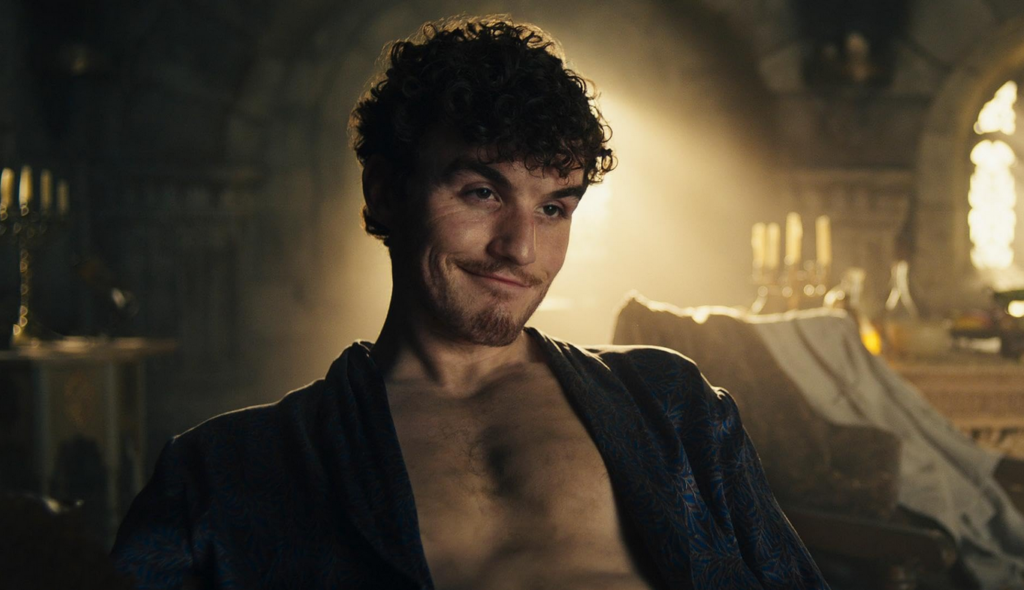
Of course, this is just one storyline among many. And while this can sometimes be overwhelming, in this case it wasn’t.
I’ll be honest, some of these storylines are going to drag for me. I know this because I’ve read some of the Wheel of Time books and I have an idea that not all the characters exactly pique my interest.
No one likes all the characters. No one likes all the storylines. While I am here for the political espionage between Queen Morgase and Siuan, not everyone likes it. While others might be fascinated with Selene trying to win Rand back, I couldn’t care less.
Having multiple storylines keeps everyone’s attention better. So long as things don’t get out of hand. Things can easily get out of hand. But this seems to be managed well.
So far.
What didn’t work
As I mentioned above, I’m not thrilled with Rand’s story at this point. And while it’s fine to not like a storyline when there are this many to choose from, it’s not fantastic that the one I like the least is the one involving our two main characters. And anytime we were with the team at the Spine of The World, the only thing that brought me joy was Moirain’s hat. It reminded me of Stockard Channing’s hat in Practical Magic.
The problem is that Rand is Charlie Brown with controversial magical powers. He is boring, serious, and pessimistic.
And yes, I understand that he has a heavy emotional burden and he’s the Dragon Reborn and that’s quite taxing and all. But let’s be fair, there isn’t a single person in this show that doesn’t have a heavy burden. And most of them manage to be fun occasionally.
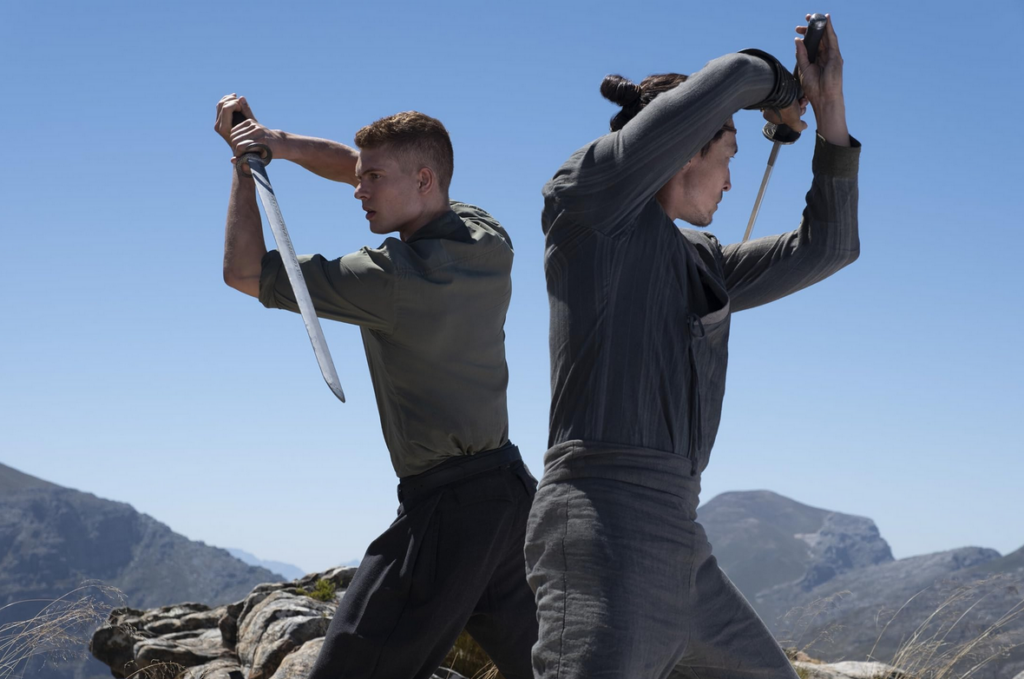
All that being said, this episode of Wheel of Time did exactly what it needed to do. It set up conflicts at each of the three locations. It established emotional ties between the characters and the events. And it established goals for everyone.
This was, in short, a solid episode. Not groundbreaking, not mind-blowing or life changing. It was simply good. It was entertaining and moved the plot forward.
Well done.
 (3.5 / 5)
(3.5 / 5)
Movies n TV
Wheel of Time Returns With A Bang
Wheel of Time is back for season three. There are mixed feelings regarding this. Last season, there were some serious pacing issues. And some serious sticking to the book’s storyline issues. But we’re two seasons in, and we don’t give up so easily. So let’s dive into episode one, To Race the Shadow.
By the way, I highly recommend watching this episode with the subtitles on. You’ll see why.
The story
We begin this episode with Liandrin facing a trial of sorts for her rampant betrayal. She does her best to gaslight her Aes Sedai sisters into thinking that Siuan Sanche is the real traitor.
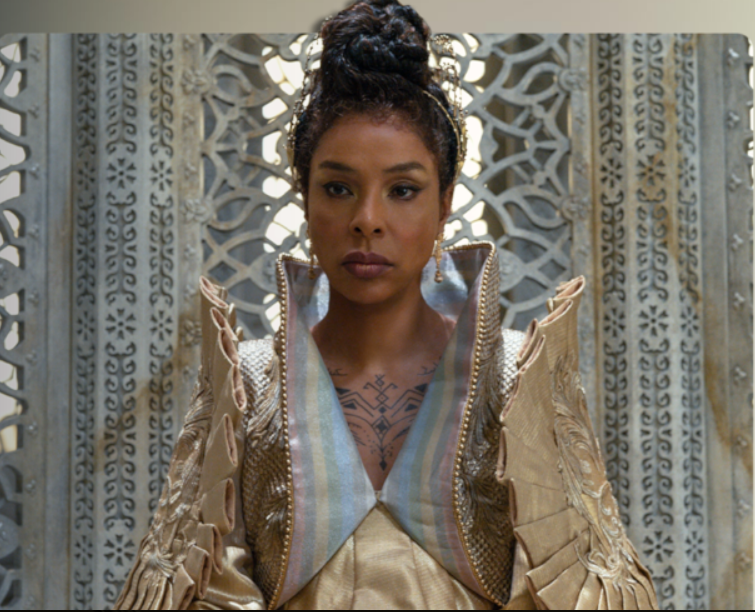
When that doesn’t work, she reveals how many Black Aes Sedai have actually infiltrated the tower.
Spoiler, it’s a lot.
In the aftermath, our whole team gathers to drink and enjoy one night of relaxation before they head out to the Tear to form an army for Rand. All is going well until they’re attacked by myriad creatures and a sentient axe.
What worked
This episode was long. It had a run time of an hour and eleven minutes. And a lot of that run time was spent in heavy dialog scenes.
Fortunately, these were well-done scenes.
If you’re going to have a lot of talking scenes, there are good ways and bad ways to do it. Last season, we saw lots of examples of the bad way to do it. But this episode did it well. For one thing, other things were going on while conversations were taking place. The characters are drinking, playing games, walking through an interesting city. And the scenes themselves didn’t stretch out. They weren’t repetitive. We heard what the character had to say, then we moved on.
It was also nice that the point of these scenes wasn’t just info dumps. We had character development. We had romantic interactions. We had plot development and foreshadowing.
Overall, this episode felt like what it was. A moment of calm before a storm.
Taking a step back, I’d be remiss if I didn’t address the fight scene at the start of the episode. Because it was epic.
The magic looked amazing. The martial arts that went along with it looked fantastic. The costumes were beautiful. It was just incredibly fun to watch.
More than that, it was emotional. We lost some characters in that fight that were important. And it was clearly emotionally shattering for many of our characters, who found themselves betrayed by people they trusted.
So many of them.
It was a great way to open the season.
What didn’t work
Despite that, this episode wasn’t without its flaws.
First off, there were a lot of dialog scenes. And they were good scenes, as I’ve already discussed. But it was one after another after another. And when your episode is, again, an hour and eleven minutes, it’s maybe a little much to have so much chit-chat. Couldn’t some of these conversations, important as they were, have been moved to maybe another episode?
Finally, I want to talk about Egwene’s travel through the arches.
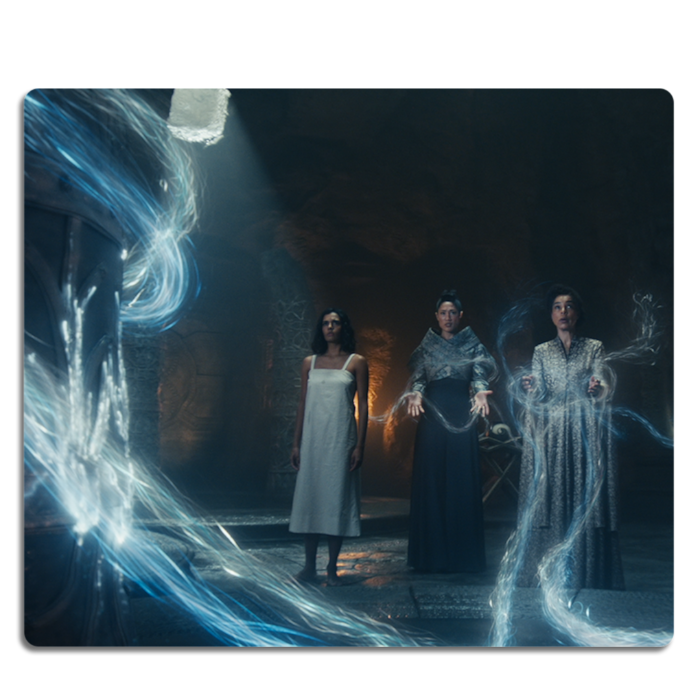
I feel like maybe there were some deleted scenes here. Because there must have been more to that visit than what we saw, right?
We could have seen Egwene battle Rand. That would have been badass and emotionally devastating. We could have seen her with a quiet life with Rand back home at the Two Rivers. We could have seen anything except for the quick clip of Rand in a bloody river, followed by Egwene being shoved back out in a bloody shift.
Bad job. But at least it wasn’t an extended scene of Moiraine collecting bathwater, and then taking a bath while looking sad. If we’d started this season with another scene like that, it might have broken my brain.
Amazon dropped the first three episodes at once. So we’ll be back soon to talk about episode two. See you then.
 (4 / 5)
(4 / 5)
Movies n TV
Entertaining as hell: Eight Legged Freaks (2002) Review
Early 2000s is a special era for the industry. It accepts the cheesiness and corniness of movie making, in turn producing some gems in their own right. Eight Legged Freaks starring David Arquette and young Scarlet Johanson is a horror comedy about giant spiders who overtake a small town. As crazy as that premise sounds, the movie surprisingly has a ton of heart and is super entertaining. Let’s review, shall we?
Plot
We start Eight Legged Freaks with a shot of toxic waste spilling into the water supply of Joshua, a spider farm owner. He is friends with Mike, one of our protagonists, who is a science geek and a spider enthusiast. Mike notices something quite right upon visiting Joshua, but no one takes him seriously. We are then introduced to the rest of the crew. Mike’s mother Samantha, the town sheriff, is too busy chasing Ashley, his sister, who is dating the town mayor’s son Bret (something Samantha does not approve of). We also have Chris, who returns to the town to save his father’s legacy in the town mines. He has opposition from Wade, Bret’s father, who wants to use the mines for his business ventures. Lots of drama going on that will only get juicier once the spiders get loose.
The creepy crawlies quickly dispose of Joshua and make their grand appearance after Ashley rejects Bret’s advances, abandoning him in the middle of a desert. A glorious chase sequence ensues as the spiders make their way towards the town, wreaking havoc on its residents. In a true horror fashion (which the movie acknowledges), it takes some convincing from Mike and then from Samantha for the town to take the threat seriously. The tongue-in-cheek style of narrative adds the comedy aspect to a movie that would otherwise burn out fairly quickly.
The remaining characters hide out in a shopping mall as it’s the only somewhat sturdy building in the area. This doesn’t last long as the spiders break in, forcing them to run through the mines. Their resources to fight the creepy crawlies off are limited as the methane gas doesn’t allow them to use firearms. Such conditions require resourceful thinking from Chris, who uses perfume to fend off the leader of the spider group and save himself during the climax of the movie.
Character dynamics are not forgotten once the action kicks in. We have Chris confessing his long-term feelings for Samantha which she knew all along, which provided some comedic relief. Bret also reunites with Ashley and apologises for being an asshole. Mike finally gets the appreciation he deserves as his knowledge saves the townsfolk more than once during the whole ordeal.
We end the movie with the town’s radio show person telling the story as an urban legend during his segment. This brings it into question – how much of it happened the way he said it did? We can only guess…
Overall thoughts
Eight Legged Freaks is a fun creature feature with some self-aware commentary on genre tropes that doesn’t take itself too seriously. The acting is good, the pacing fitting and the characters are likeable enough for you to want them to make it through. Definitely a must watch, if you don’t suffer from arachnophobia, that is.
 (5 / 5)
(5 / 5)

